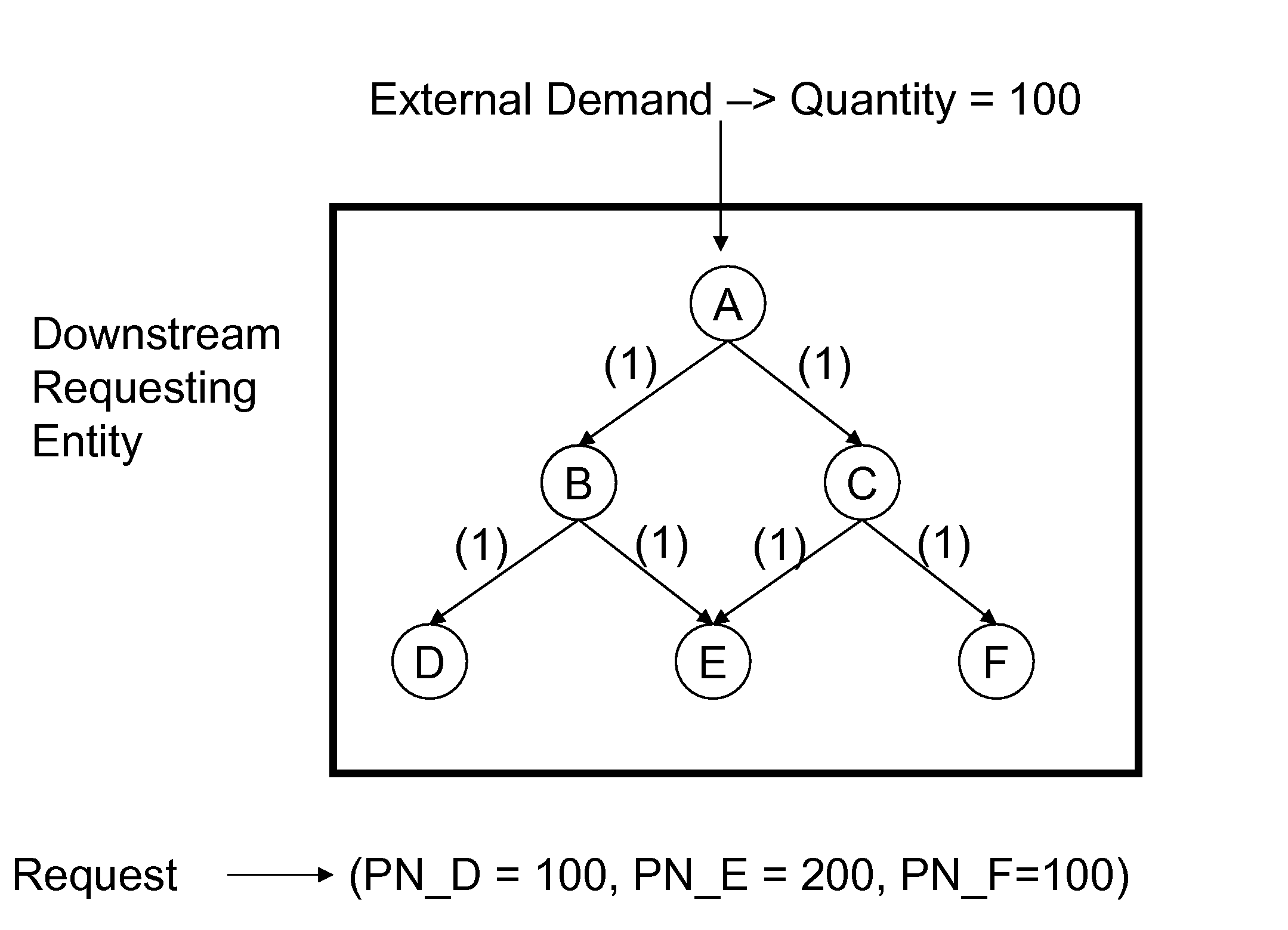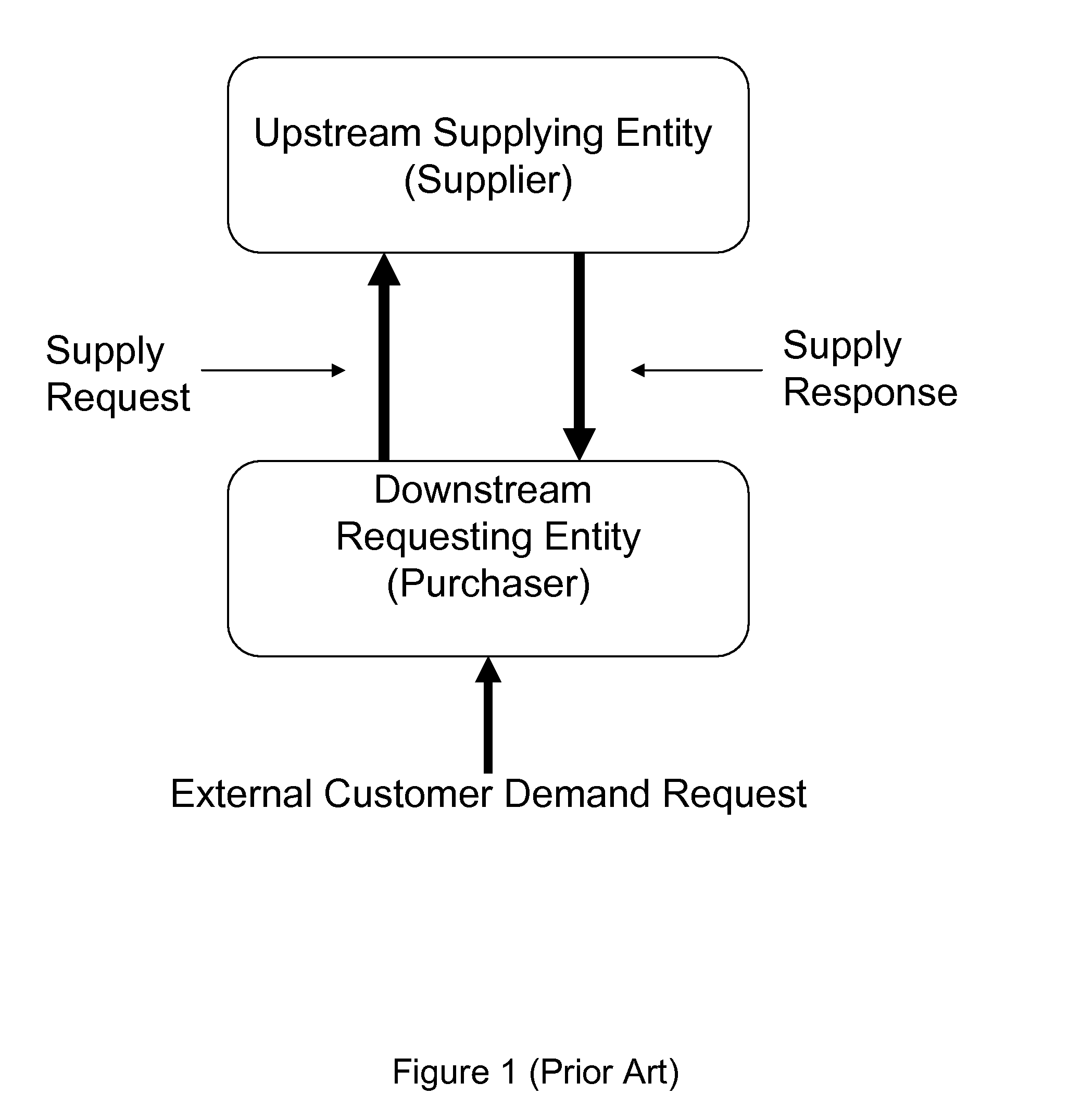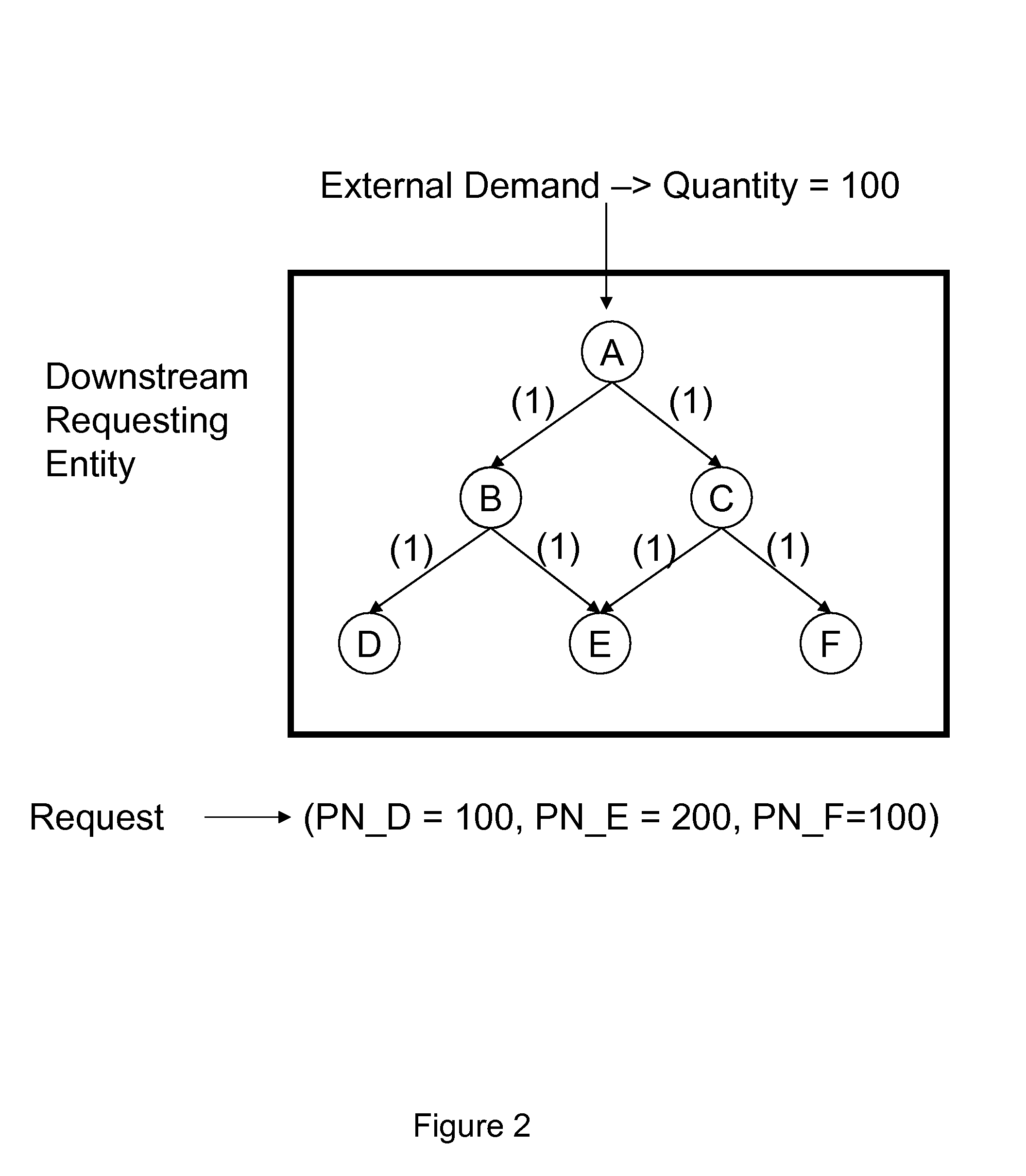System for and method of interpolation for supply chain planning
a supply chain planning and interpolation technology, applied in the field of system and method of improving supply chain planning, can solve the problems of material and capacity assets being allocated to meet end customer demand, and achieve the effects of reducing the time required to complete the ask-answer process, facilitating purchasers, and improving quality solutions
- Summary
- Abstract
- Description
- Claims
- Application Information
AI Technical Summary
Benefits of technology
Problems solved by technology
Method used
Image
Examples
Embodiment Construction
[0018]A production planning linear program (LP) (such as that described in U.S. Pat. No. 5,971,585, “Best Can Do Matching of Assets with Demand in Microelectronics Manufacturing,” issued Oct. 26, 1999) can determine decisions including: production starts, material substitutions, and shipments planned to customers, between manufacturing and distribution locations, and from vendor suppliers. An LP is composed of an objective function that defines a measure of the quality of a given solution, and a set of linear constraints. The types of equations used in production planning models are well known to those practiced in the art and include:[0019](1) Material Balance Constraints which describe the allowable flow of materials through the network of stocking points comprising the supply chain.[0020](2) Capacity Constraints which define the amount of capacity available for manufacturing activities.[0021](3) Inventory Constraints which define the amount of inventory of a given part or group o...
PUM
 Login to View More
Login to View More Abstract
Description
Claims
Application Information
 Login to View More
Login to View More - R&D
- Intellectual Property
- Life Sciences
- Materials
- Tech Scout
- Unparalleled Data Quality
- Higher Quality Content
- 60% Fewer Hallucinations
Browse by: Latest US Patents, China's latest patents, Technical Efficacy Thesaurus, Application Domain, Technology Topic, Popular Technical Reports.
© 2025 PatSnap. All rights reserved.Legal|Privacy policy|Modern Slavery Act Transparency Statement|Sitemap|About US| Contact US: help@patsnap.com



